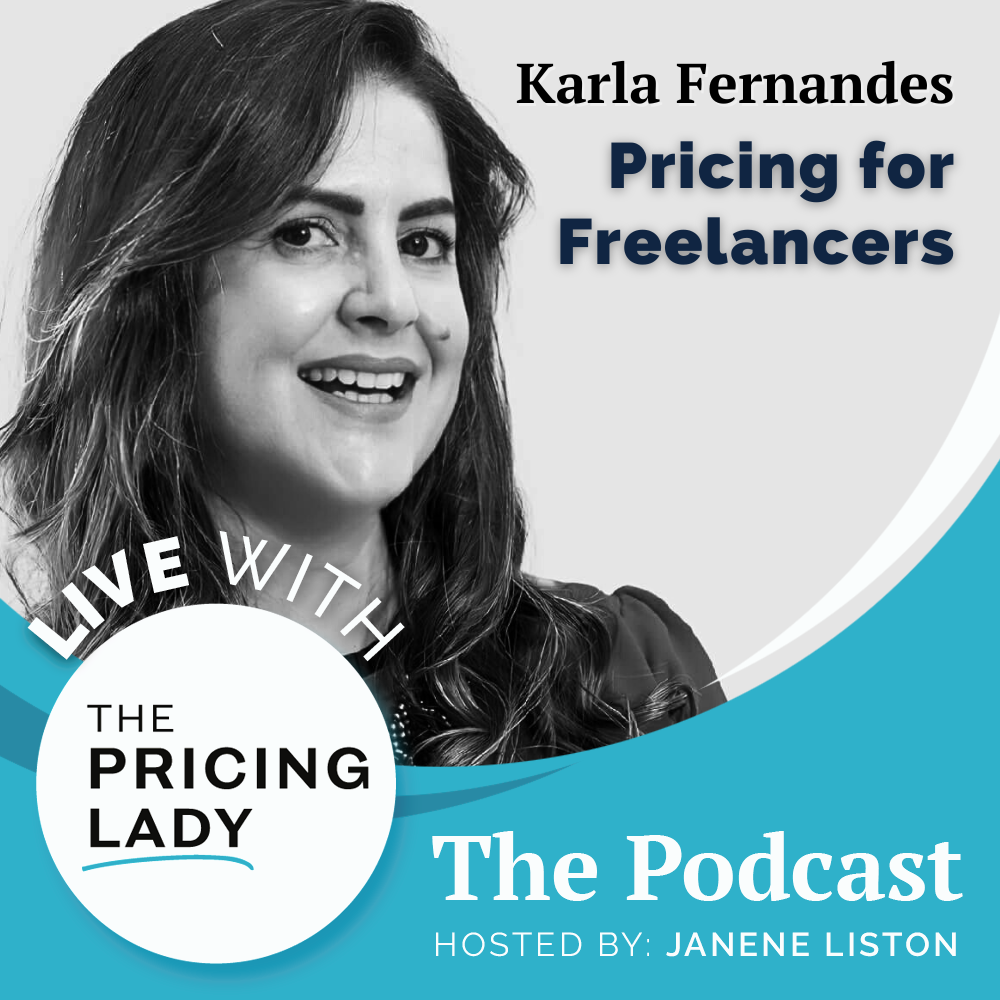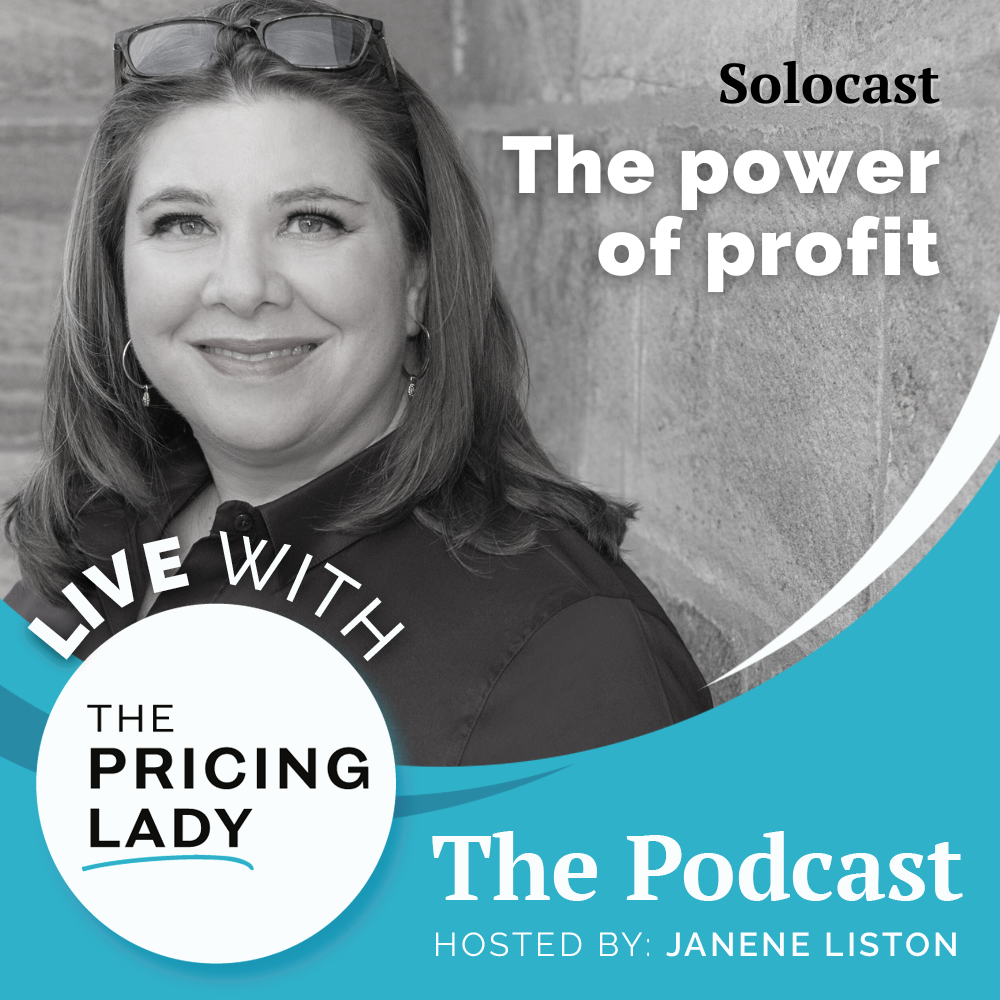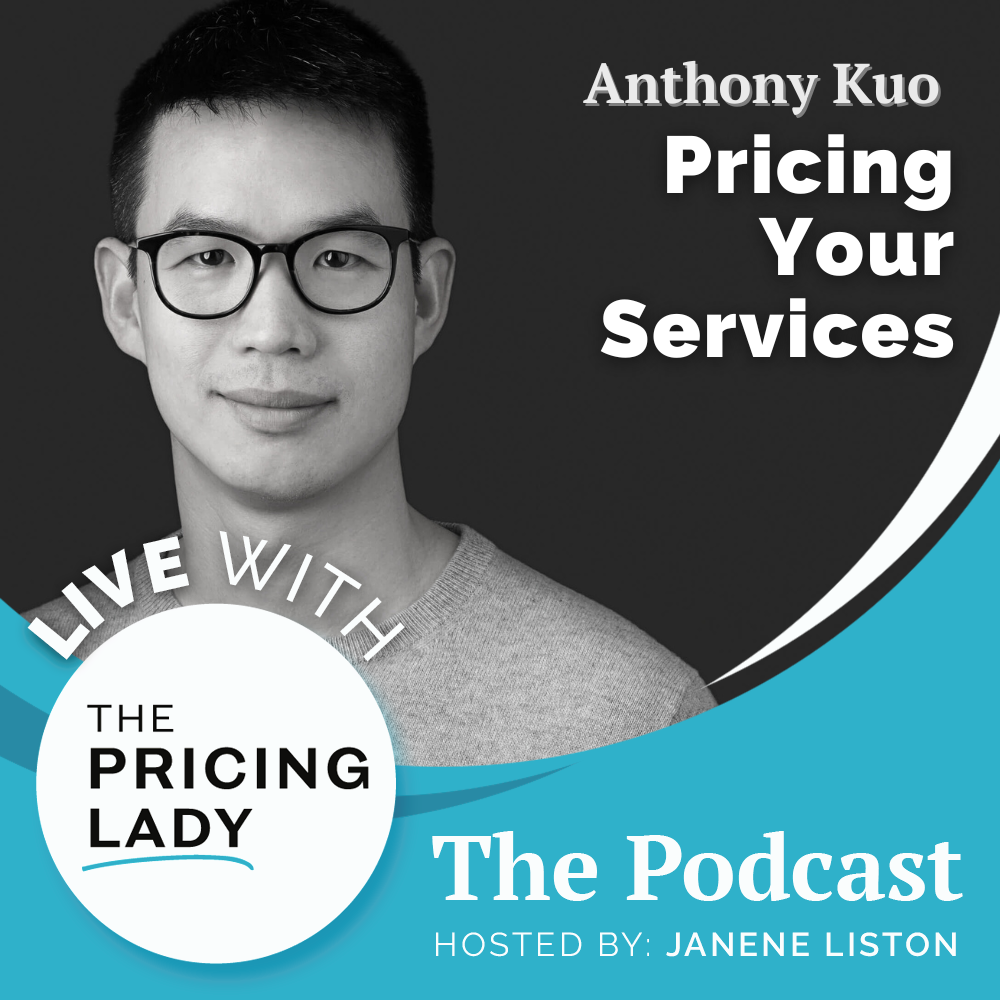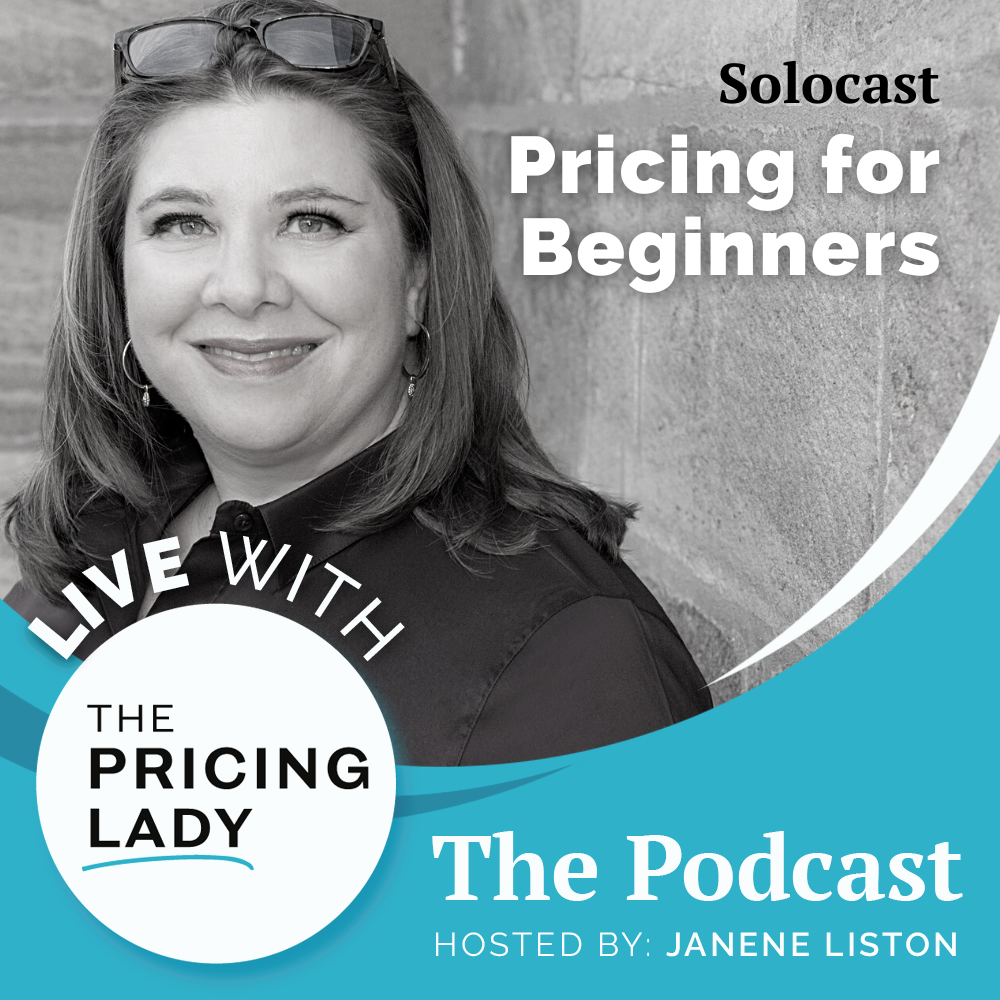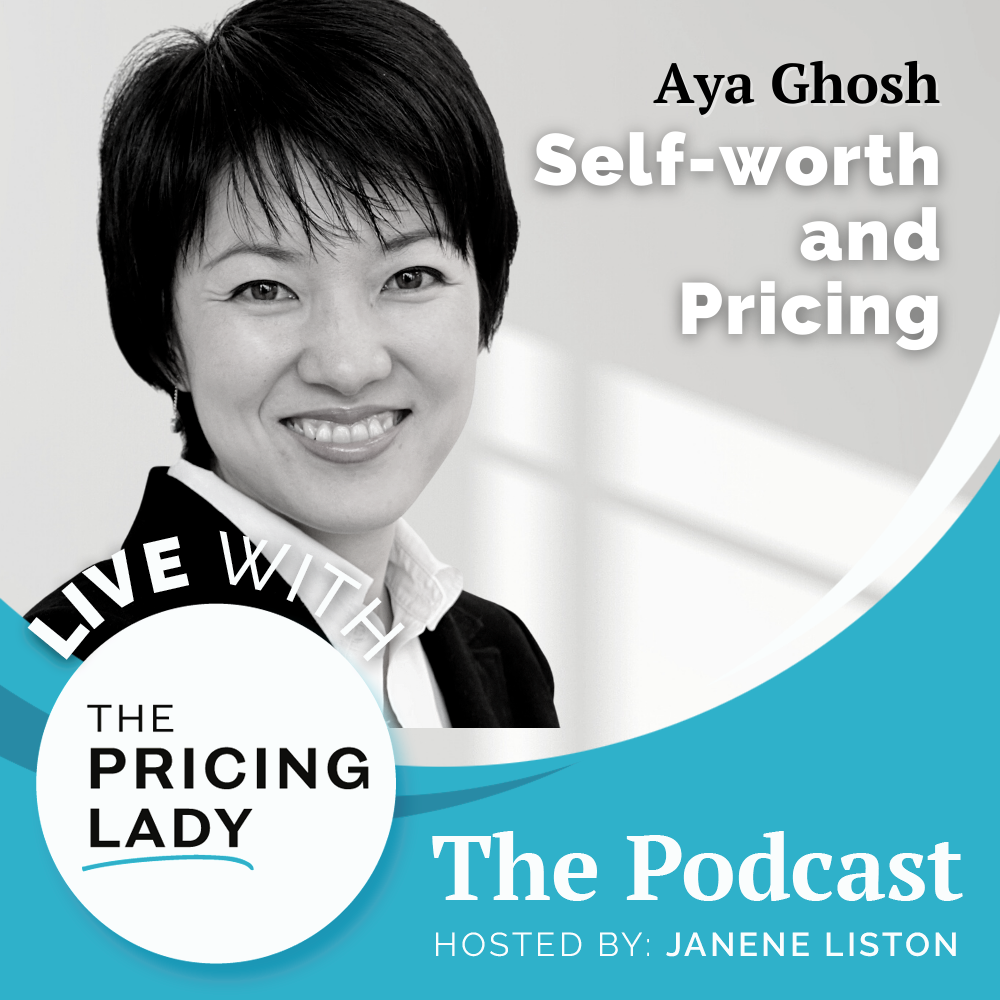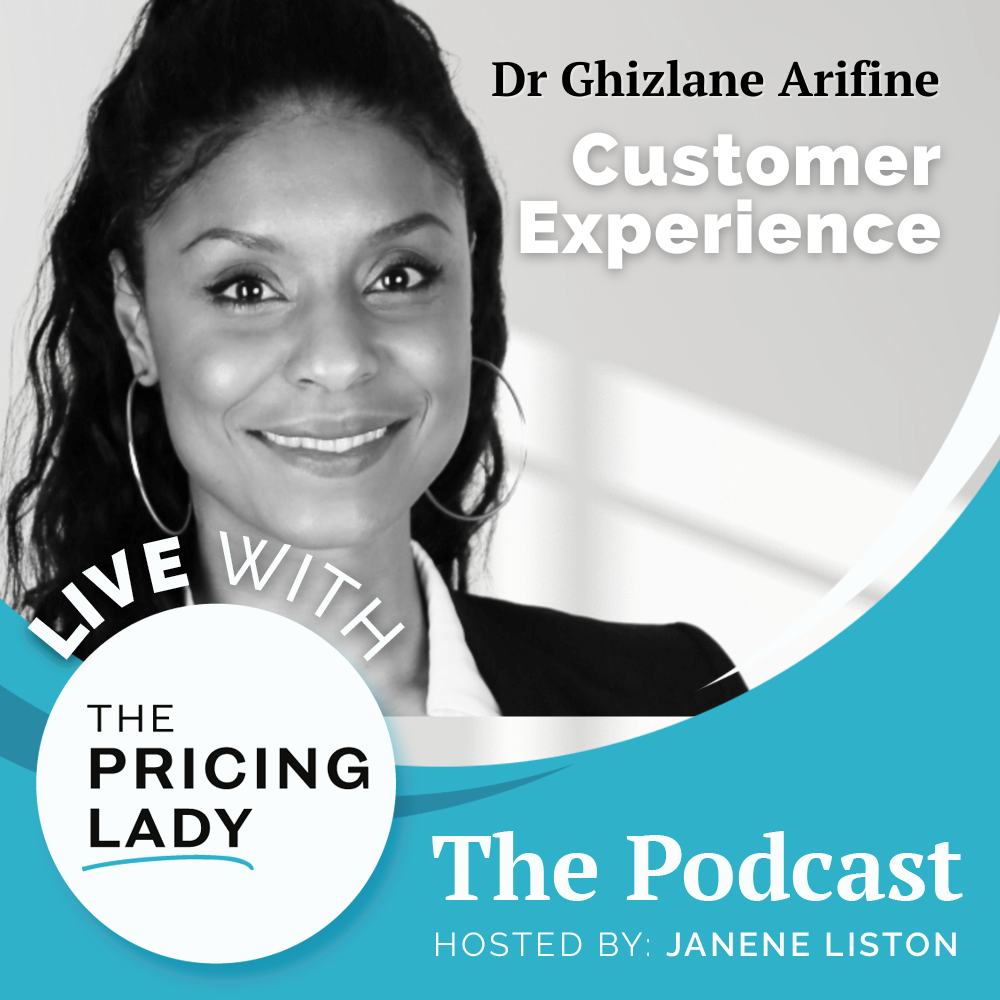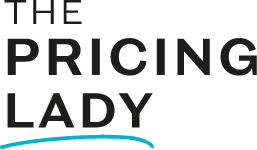Price setting is a thought process not a mathematical calculation.
Often when people ask me how they should know what to charge they expect me to give them a mathematical formula to make the calculation. Determining the right price for your offer is different. It’s a thought process where you look at different aspects to determine which prices are best. Businesses that treat pricing as a math problem are missing one of the most important rules of pricing:Pricing is rooted in a deep understanding of the customer and what they value.
When you understand that you realize that a mathematical equation can’t possibly incorporate the a customers perception of value for example or how they feel about the brand. Or for that matter the competitive environment. Which means in order to set the best prices for your business, it’s time to think about pricing in a different way. Start thinking about it as a thought process – one where you incorporate the different aspects that drive your pricing and influence customer behavior.
In This Episode…
In this episode of Live with the Pricing Lady, I dispel some of the myths around price setting and share with you the formula I use with clients (hint: it’s a thought process people). The great thing about the thought process is it applies to just about any type of business. Meaning it can work for you too.
Watch the YouTube live stream replay, here if you prefer video.
Episode Highlights (Podcast)
Note: There were some technical difficulties during this episode and therefore for the podcast a new recording was made. These highlights are for the podcast only.
- 1:25 Introduction
- 2:42 Where to begin
- 4:46 Get clear on your offer
- 6:18 What’s the value?
- 8:33 What else is out there?
- 10:48 What will it take to be profitable?
Great Quotes from this Episode
“Once you know who the customer is and what they value, and you have a clearly defined offer, then you can start looking at what’s the (economic) value of my offer.” Janene
“There’s a difference between functions and features and the value. …the value actually is one step further than that. It’s okay, why does the customer want that? If you can’t answer that then there’s no quantifiable value in it (that function or feature).” Janene
“(think about)… in the scale of prices and value that are out there somewhere between zero and infinity, where are you positioned and is that right for your brand, for your business and for what your customers are actually looking for?” Janene
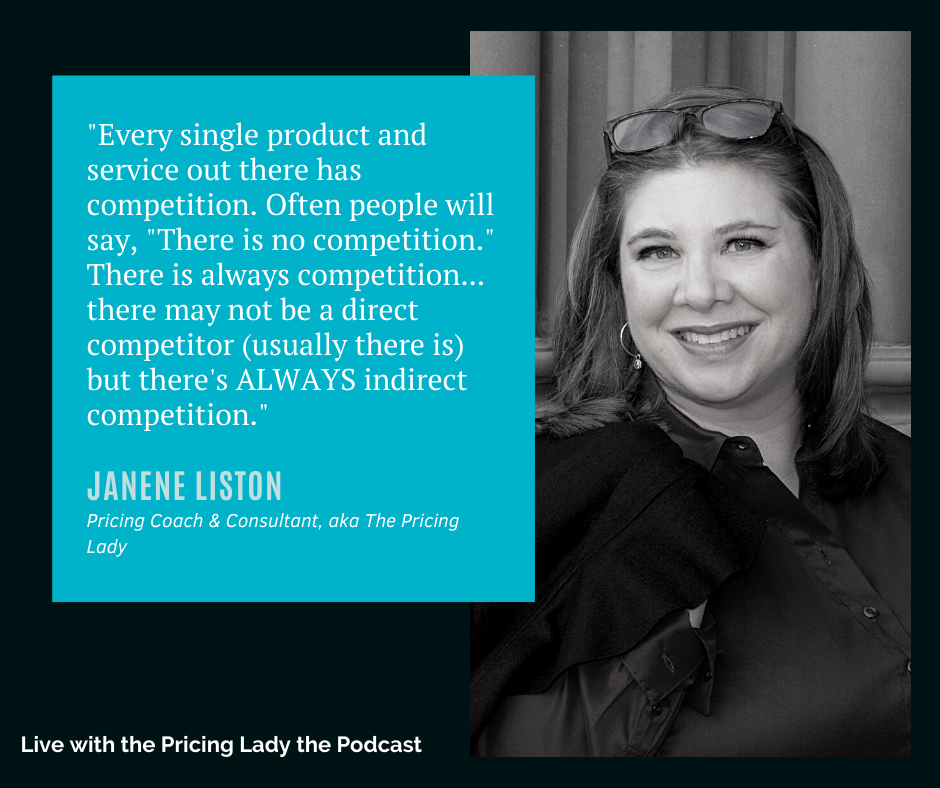
Episode Links
When it comes to any price setting thought process, customer willingness to pay is an important component. Which is why I have a DIY guide available for those who want to run their own WTP survey.
Connect with Janene
Website | Linkedin | YouTube | Facebook | Email List
Get started improving your business. Sometimes it’s difficult to know where to begin. I suggest you Download the the self assessment Pricing Scorecard. Get a view of what’s working and what’s not working when it comes to pricing in your business. Figure out where to start making improvements.
Get in touch with Janene. If you’ve got a question that needs answering, a challenge you’re facing or you have suggestions for future topics or guests, let me know. Contact Janene.
Listen up! Don’t miss out. There’s a lot going on and you’ll want to be in the know. Follow my YouTube channel (rate it too please) so you don’t miss an episode of Live with the Pricing Lady or join my Email List.
Transform your business and life. My business is about helping you build a better business. One that’s profitable and where you can confidently charge for the value you deliver. Let’s see how we can work together. Book a complimentary Discovery Call today!
Episode Transcript
We’re going to be taking look today at my five step Price Setting Thought Process. Now, this is the process I use with my clients when they want to learn and understand how to go about setting the right prices for their business.
And there are five steps to this, as I said. There’s a customer, the offer, the value, the marketplace and cost and profit. We’ll go through each of these in a little bit more detail. What I’d like to emphasize here is that yes, all five steps are necessary. Now, some steps you will look at in more detail than others, depending on your business and your industry, and what’s most relevant, but you should look at all five steps.
There may be other influencing factors that come into play, like maybe there’s industry standards that might affect your price that might come in in the marketplace, or it could come into the offer because that may dictate what you need to offer, how you need to offer it. But we’re going to take a look at each of these five steps in a little bit more detail so that you can understand how they might be influencing what you set as prices in your busin
It’s All Begins with an Understanding of the Customer
Pricing is rooted in a deep understanding of the customer. This is actually where you should start. Most service-based businesses erroneously start with what they do. For example: I’m an NLP expert. Then they look at what other NLP experts are doing and say, okay, I’ll price a little bit less because they’re new in the market. This leaves out the most important thing the customer they make the buying decision and judge the value.
Now, you product based businesses are not off the hook on this.You tend to start with: I have this really cool gadget, let me add up my costs, add a margin and that’ll be my price. Again it leaves out the decision maker. Again, this is why I encourage you all to start your price setting by understanding who the customer is and what they’re willing to pay. Because that is what’s going to help you understand what prices to offer.
If you’re curious about willingness to pay, I do have a Customer WIllingness to Pay DIY Guide and Tool available. Grab a copy of for a small fee and run your own customer, willingness to pay survey. The customer is the ultimate ultimate judge and jury on what a fair price is for the value, as far as they perceive it.
Defining the Offer Based on the Customer
The second step is the offer. You can’t really, or shouldn’t really define the offer until you’re clear on who you’re targeting. If you do that in the reverse order, you run the risk of bringing something to market that nobody really wants.This is the number one reason that startups fail. There’s no need in the market for what they have to offer. First you define who you’re targeting, then you set what you’re going to bring them based on what their needs are and what their problem is.
Yes, sometimes you may know a little bit more about what they need, but you’re still going to have to connect with them in terms of what they think they need. So you may be delivering a bit of both. But the offer needs to be clear before you can actually, set the price for it. Because that will influence the price. Of course, if you have certain functions or features, or if you include certain, you know, consulting packages in there, those things will influence the price that you can charge.
One of the biggest mistakes businesses will make is they try to sell everything to anyone. When I ask who’s your customer, they say, “oh, anybody can buy it”. What are you offering? “Oh, we can make everything”. And this is a really quick path to become a generalist. And to have to have relatively low prices in order to meet the needs of everyone. That is not going to create success down the road for you, for the most part.
Extracting the Economic Value of Your Offer
Now that you know who the customer is, what they value, and you have a clearly defined offer, then you can start looking at what’s the value of my offer. Once you can identify what customers value most in your offer, then make an estimate, in a dollar amount to quantify how much value that is worth. This puts your price into context. When your price has context, it has a meaning. It helps you to feel more confident about the price you’re offering.
Now, let me be clear. There’s a difference between functions and features and the value. A smartphone has many functions and features. Most I never use. I don’t value them, so they have little influence on what I’ll pay. But the storage space, that’s relevant. Which is why it affects the price so much. Manufacturers that’s really important to the buying decision.
You want to think about that in the context of your business as well? So be careful about taking functions and features and assuming that’s the value. The value actually is one step deeper than that. Ask the question: why does the customer want that? If I say, well, it has 128 gigs. And you say, “Yeah. So what. I don’t care.” Then that’s not something you value. And not something you’re going to pay for. But if you’re excited you can store a lot of photos on it and that you don’t have to have, a separate device for storing them, then you go, “oh, okay. I’m willing to pa for that. That has value for me.”
Who & What is Available in the Market?
Step number four is turning to the market and looking at what’s going on there. One of the mistakes people make here is they assume that if there are no direct competitors, then they have no competition.
Every single product and service out there has competition. Clients often say to me, “Oh, there is no competition.” But there’s always competition.
First of all, there’s always competition because the person can choose to do nothing. That is one form of competition. Or doing the same thing that they’ve been doing all along, it’s also competition. Sometimes the biggest competitors are indirect competitors. They’re solving the same problem in a different way. Or even not the same problem, but customers spend the allotted money on something similar. That’s also competition. Like they could go to the movies or they could go to dinner. Those are two completely different things, but they’re competing for the same money the customer has to spend.
Now you can’t account for everything because you know, that would be, that would take a lot of time and effort.But depending on your business, that may be a really critical piece of information. And what we try to do here in this marketplace picture, is map out who are your biggest competitors direct and indirect, the value they bring in their prices, from the perspective of the customer. To see where your business fits and to make sure that you’re positioned in the right way. Not necessarily to match everybody else. But in the scale of prices and value that are out there somewhere between zero and infinity, to understand where are you positioned. To decide if that’s right for your brand, for your business and for what your customers are actually looking for?
What’s the Cost and Profit Picture
The fifth and last step is a must, because this is going to help you understand, can you be profitable? Step number five is taking a look at cost and profit. So by the time we get, to this phase we’re creating a price list and then we can start running simulations. What’s the cost structure? And how much volume you’ll need to have to do in order to reach the profitability targets?
Clients start to develop an intuition for how, different business decisions they make in their business will influence how quickly they can be as profitable as they want to be. It’s amazing. This is another area where people make big shifts in their understanding and their confidence in the prices that they offer.
Because if you know that in order to reach your objectives, the price needs to be here and you have to get X number of customers to buy it at that point. You know, precisely what you need to do in your business in order to achieve your goals.
So the cost and profit check for a service-based business versus a product based business, is a little bit heavier for your product based businesses. Because you have all of those variable costs. It is absolutely critical and important for every kind of business. Whether your service or product based or software as a service, regardless of the business type, this is a must have. Because it is going to help you one develop that intuition and two it’s going to help you understand if your business model is going to work and what you’re going to have to do in order to achieve that.
It’s an Iterative Process
Price setting isn’t an equation, it’s an iterative process. It’s a process that you would use primarily for your most important offers. Like your signature offers or the main product that you sell and then other parts of your offer are actually priced in relationship to that.. That’s the whole thought process in a nutshell. It might give you a few things to think about. Enjoy!

